Some of the links in this post may be affiliate links.
Epipremnum aureum ‘N’ Joy, or Pothos N’Joy, is a gorgeous variety of the easy care Pothos that we all love. In this post, I will go over 5 practical care tips that you will need to help your plant thrive. I also go over propagation tips and the answers to many commonly asked questions about NJoy.
Let’s get to it!
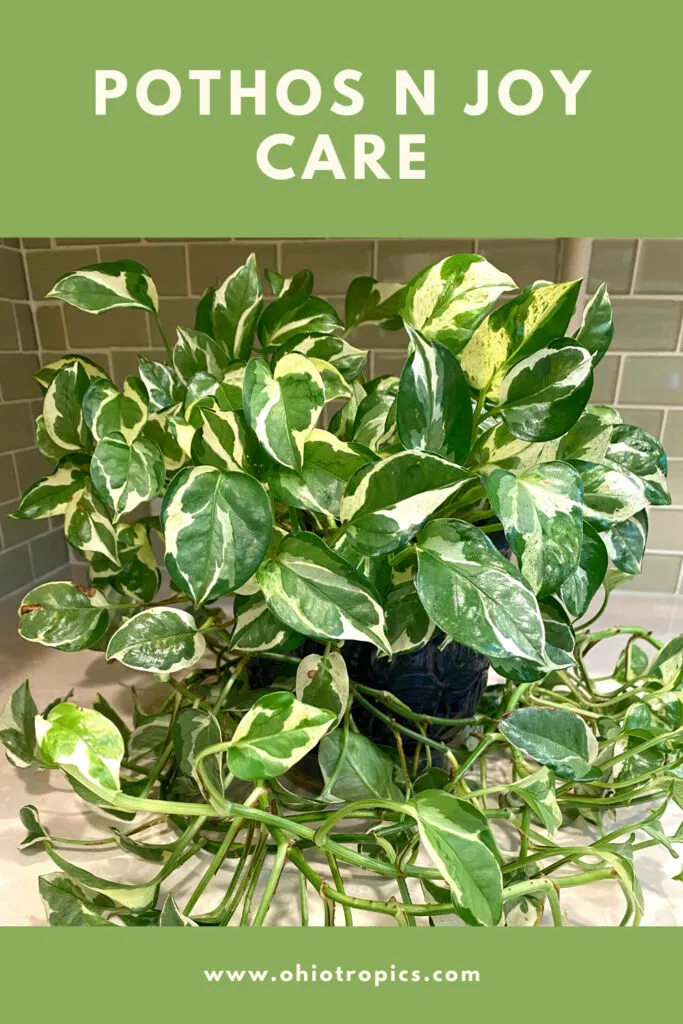
Table of Contents
POTHOS NJOY CARE
As far as care goes, growing Pothos N’Joy is the same as any other Pothos. Like any highly variegated plant, expect a slower growth rate versus plants like the common Golden Pothos.
Pothos NJoy is often confused with other varieties of Pothos, especially Pearls & Jade and Marble Queen. The easiest way to tell the difference is that NJoy lacks the tiny splashes of green that are present in both Pearls & Jade and Marble Queen.
Whether you grow it as a hanging basket, sprawling on the top of your kitchen cabinets, or with a moss pole, the results are always delightful.
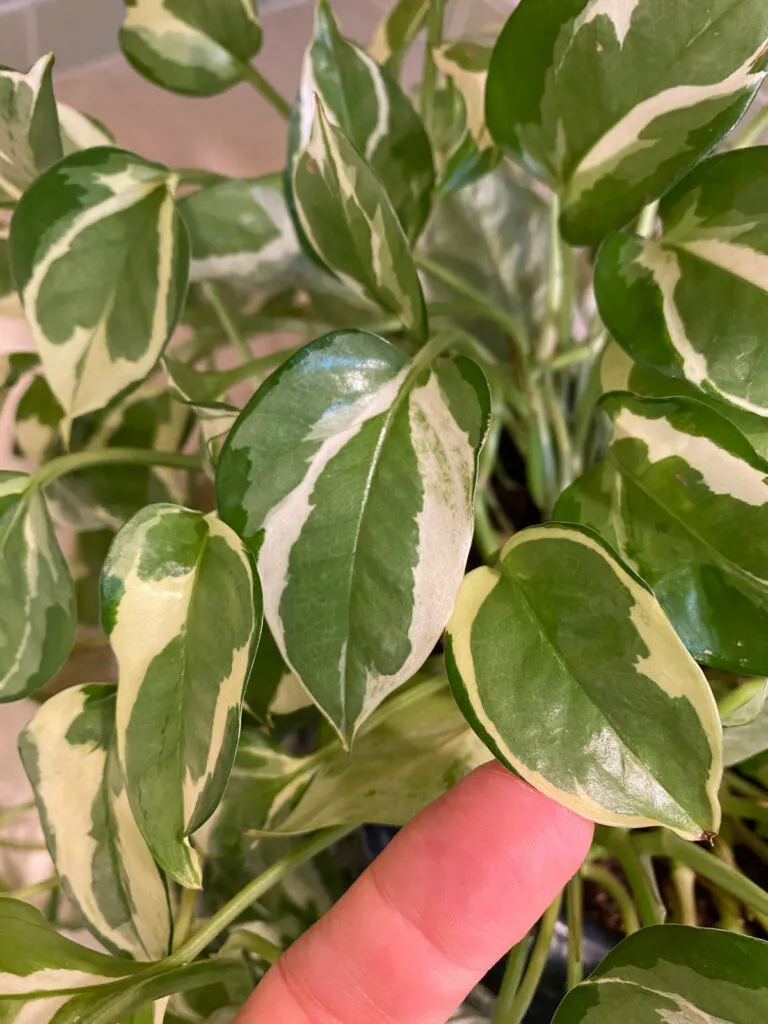
1. LIGHT
In order to preserve the variegation, be sure to provide your Pothos NJoy with enough light. My own plant is sitting right under a skylight in my kitchen and it gets sufficient light for good growth, while maintaining variegation at a pleasing level.
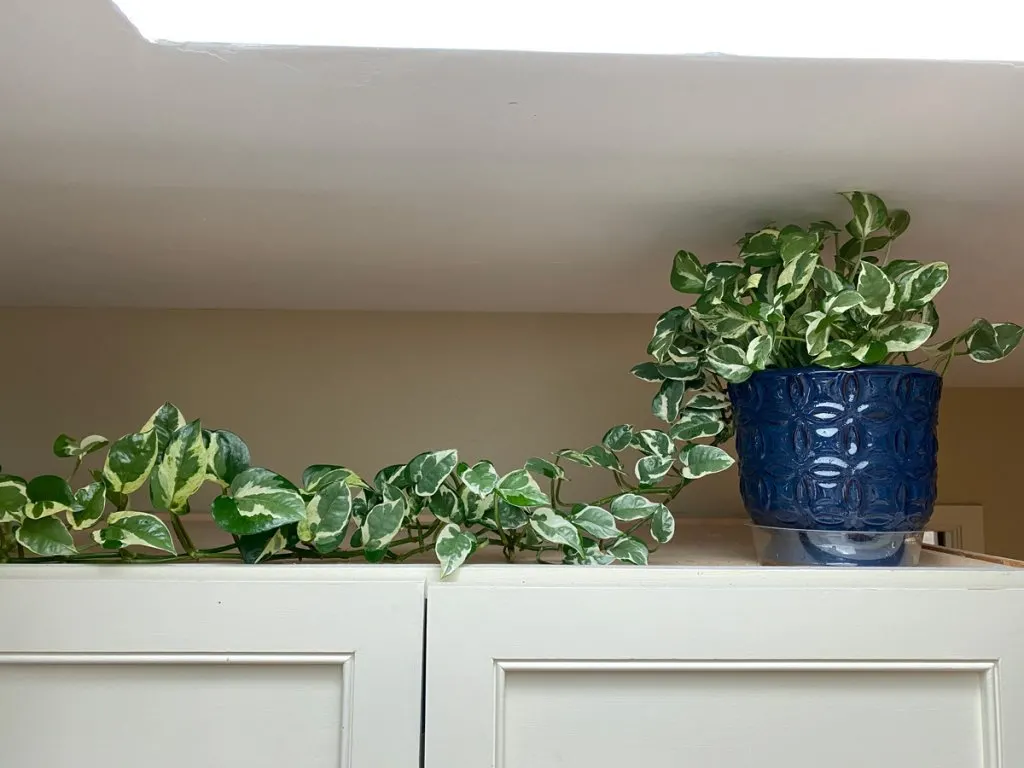
As far as windows go, situate your NJoy in front of a window with up to half a day of direct sun. You may want to avoid too much direct sun in the middle part of the day when it is strongest. Otherwise 2-3 hours of direct sun per day is beneficial.
If you don’t have sufficient natural light, you can supplement with grow lights, or even grow them exclusively under grow lights.
2. WATERING
Allow your potting mix to dry out at least an inch on top, and up to about the top quarter of the potting mix. Try and avoid letting the potting mix dry out completely. Doing so will cause wilting of the whole plant, yellow leaves, as well as ugly brown and crispy leaf edges.
Never let your plant sit in water for extended periods of time. Discard any excess water that accumulates in the saucer underneath, or in your cache pot if you’re using one. Prolonged periods of wet soil will cause root rot.
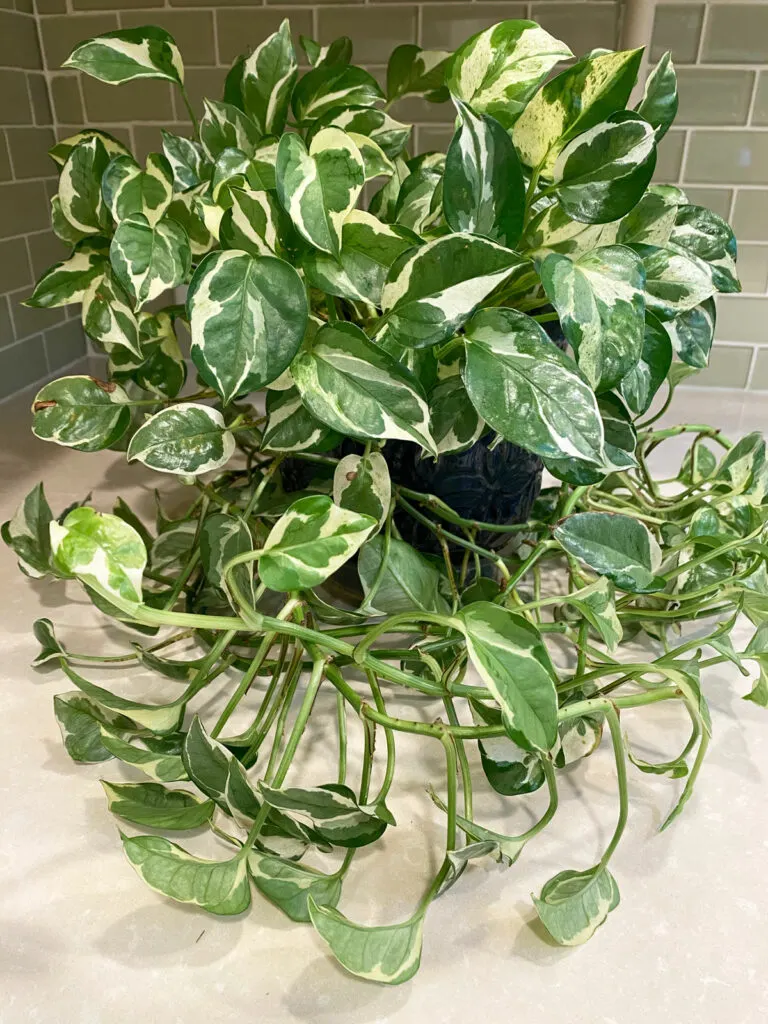
3. FERTILIZING
Fertilizing is an important part of houseplant care and ensures robust and healthy growth. I use Dyna-Gro Grow my NJoy. It’s an amazing fertilizer and I’ve achieved wonderful results with it.
Not only is it urea-free so it will minimize any burning, but it also contains all the macro and micro nutrients that plants need to thrive.
I simply mix 1/4 to 1/2 teaspoon in a gallon of water and use it every time I water. During periods when growth has slowed or stopped (winter time for me), I stop fertilizing.
4. SOIL
For a great potting mix, just use about 3 parts of your favorite all-purpose potting mix with 1 part of perlite.
Always ensure that your plant is growing in a pot with drainage holes.
If you’re looking for an amazing potting mix that you can use straight out of the bag for your Pothos, check out the Tropical Climber Soil Blend from Oh Happy Plants. This is an amazing mix and you will get 10% off at checkout automatically if you use my link.
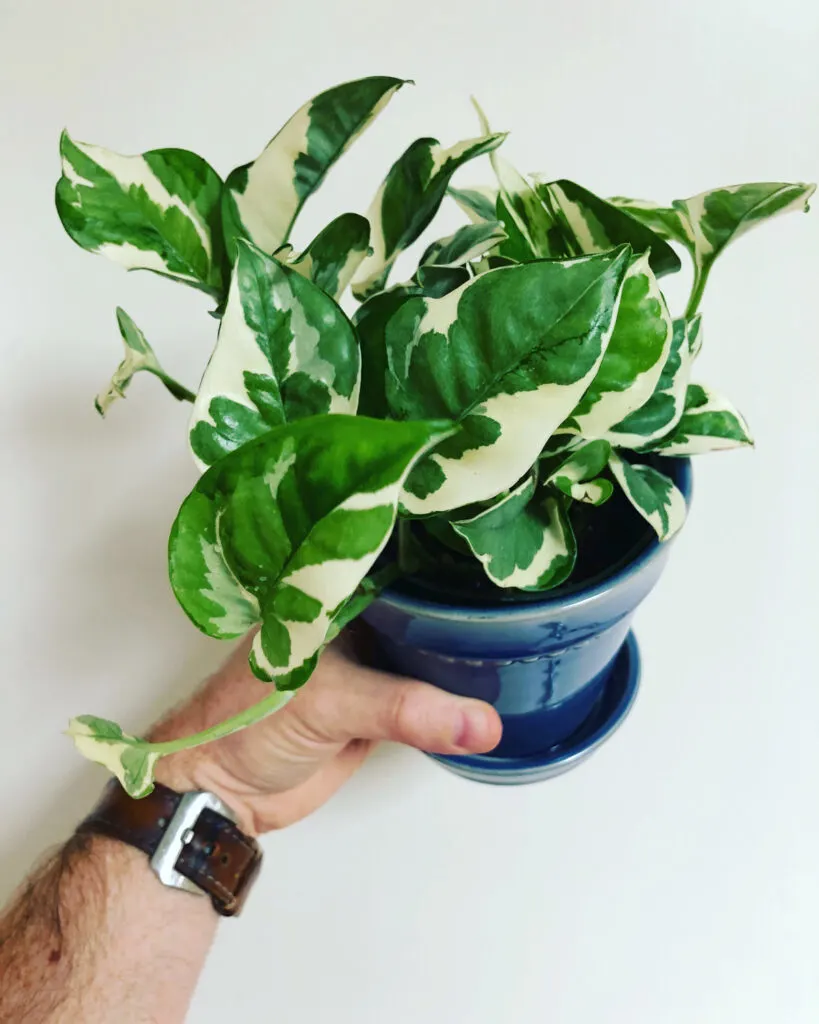
5. TEMPERATURE & HUMIDITY
Pothos like it warm and will often sulk if temperatures are too low. NJoy grows fairly slowly to begin with, so warmer temperatures will benefit your plant. Aim for daytime temperatures of at least 65F (18C) or above for best growth.
If you are ever moving any houseplants outdoors, wait until minimum night time temperatures are consistently at least 55F or above.
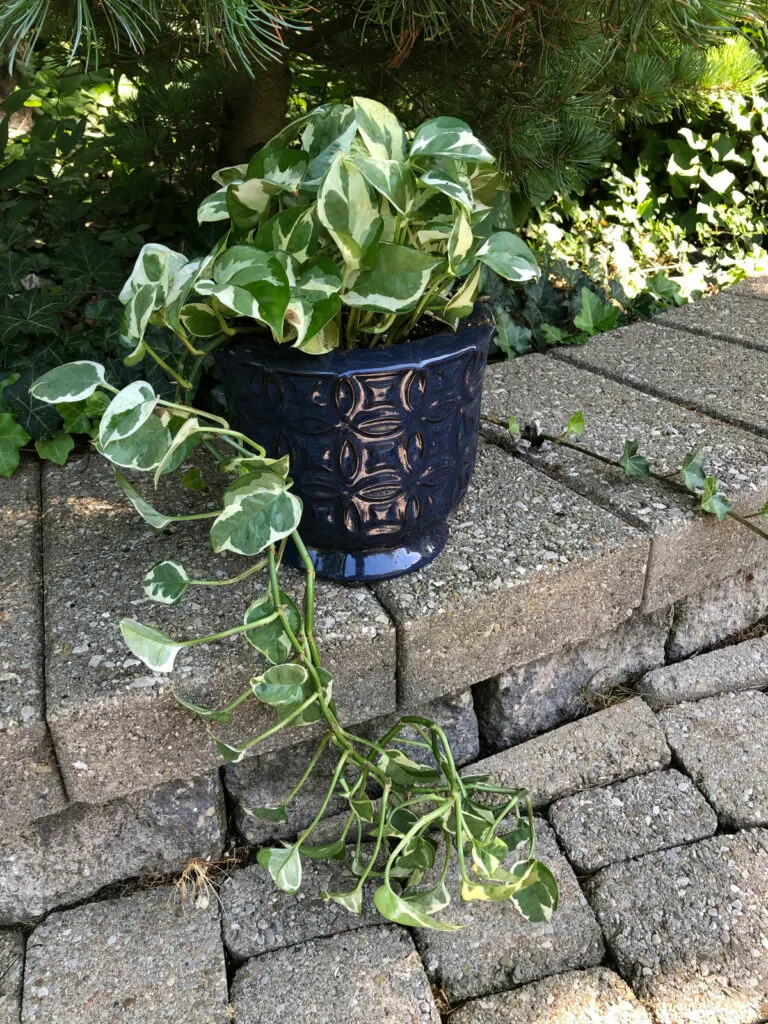
Avoid any particularly cool, drafty rooms indoors.
Pothos is not picky with humidity, but if you can provide more humid conditions, it is beneficial! If you are increasing humidity, it is also important to increase the air flow if you can. Having a ceiling fan on low, for example, will help with this, especially if you have many plants in the same room.
Doing so will help decrease instances of fungal issues and other diseases.
PROPAGATION TIPS
Like any Pothos, NJoy is a cinch to propagate. Simply snip the vine and ensure that you have at least one node and a leaf like the photo below. (The plant in the photo below is Golden Pothos, but it works exactly the same way).
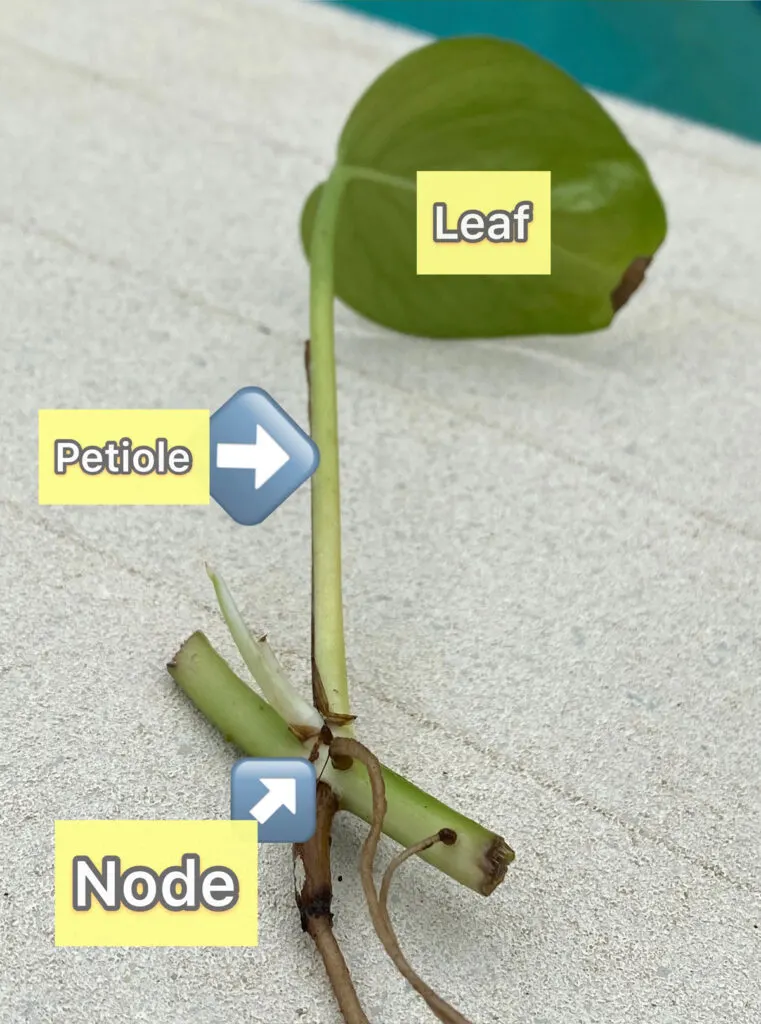
Don’t make the cuttings too long. If you don’t want to do single node cuttings (this will maximize your plant material), try not to have cuttings much longer than 6 inches or so otherwise you may run into issues with rooting.
Simply place your cuttings in water, ensuring that the node (where the petiole meets the vine itself) is under water. When roots are about 1/2 inch to an inch long, transfer to a pot with potting mix.
If you’ve had trouble getting your Pothos to root, be sure not to miss my detailed post on the top 10 reasons why you’re failing at propagating Pothos.
COMMON POTHOS QUESTIONS & PROBLEMS
Is Pothos N Joy toxic?
Like any member of the Araceae (aroid) plant familiy, Pothos N Joy contains insoluable calcium oxalates which is toxic to dogs and cats according to the ASPCA.
What is the difference between Pothos N Joy vs Pearls & Jade, Glacier Pothos, Harlequin, Marble Queen, and others?
The care is essentially identical, but there are some subtle differences visually. Refer to this Pothos Varieties post that visually shows 15 different types (with photos) and describes how to tell the difference.
Why are my leaves turning yellow on my NJoy?
There are numerous reasons why leaves turn yellow. Most commonly, it is due to extremes in soil moisture. Your plant has gone either completely dry for too long, or has stay wet for too long. Try and strike a balance and only let the top quarter of the potting mix dry out for best results.
Why is my Pothos NJoy growing slowly?
LIght is the most important factor in growth rate. However, if you are comparing your Pothos NJoy to the more common Golden Pothos, NJoy naturally grow much slower.
Why does my NJoy have small leaves?
Poor light will generally will cause much smaller leaves. To increase the size of your leaves, try providing consistent growing conditions, good light and make sure to fertilize regularly.
Why is my Pothos NJoy wilting or collapsing?
Most commonly, your plant can collapse or wilt if the potting mix has gone bone dry. If this is the case, water it thoroughly right away and it will bounce back if you haven’t waited too long. On the other hand, if your plant has stayed wet and developed root rot, your plant can also exhibit the same behavior. Never let your plant sit in water, either in the saucer below the plant or in your cache pot if you use one, for extended periods of time.
Why are my leaves turning brown and crispy?

There are many reasons why Pothos leaves turn brown and crispy. If your plant looks healthy otherwise, the most common reason is that your potting mix has gone completely dry for too long. Do this repeatedly, and you can get many brown and crispy edges.

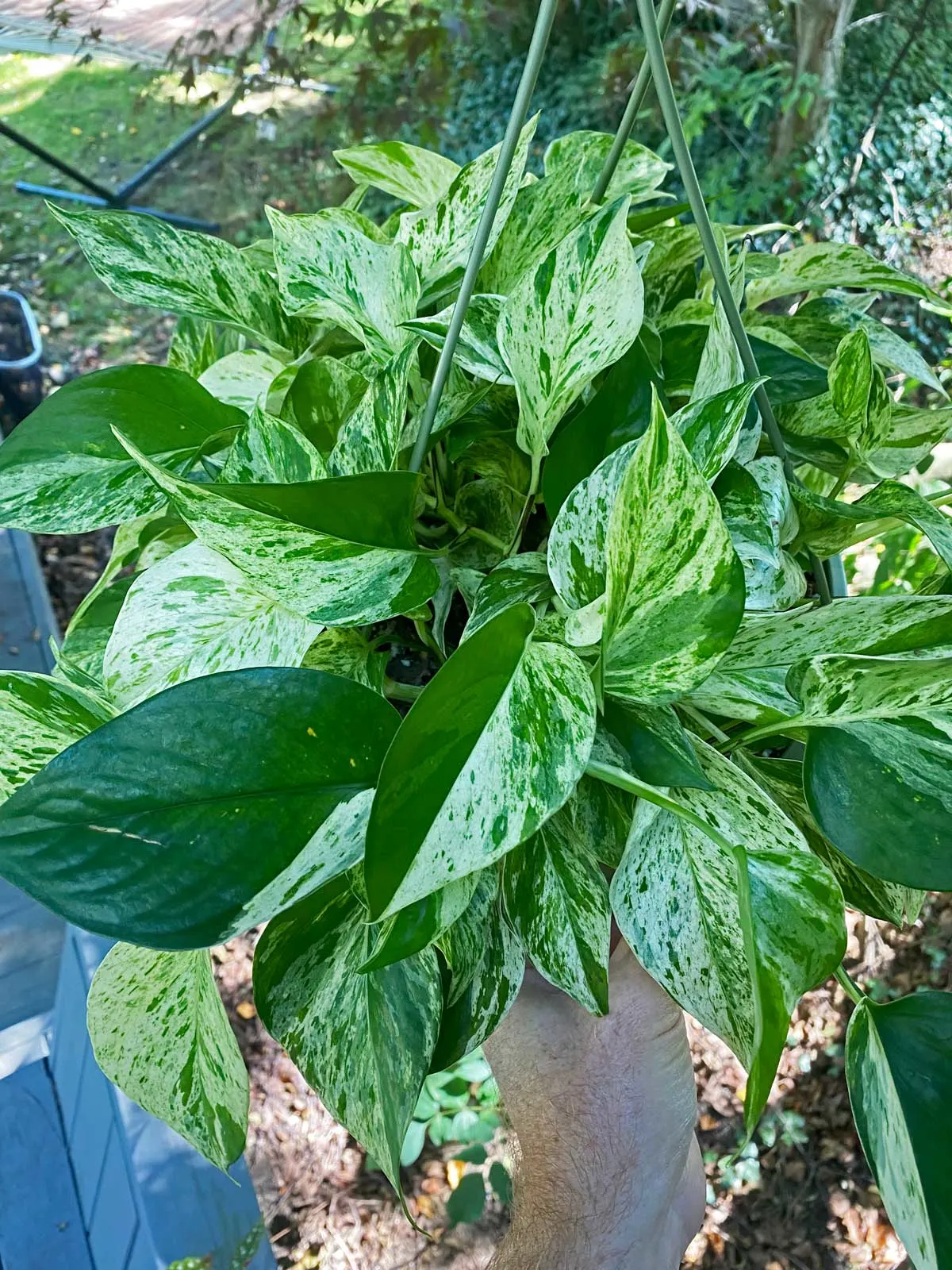
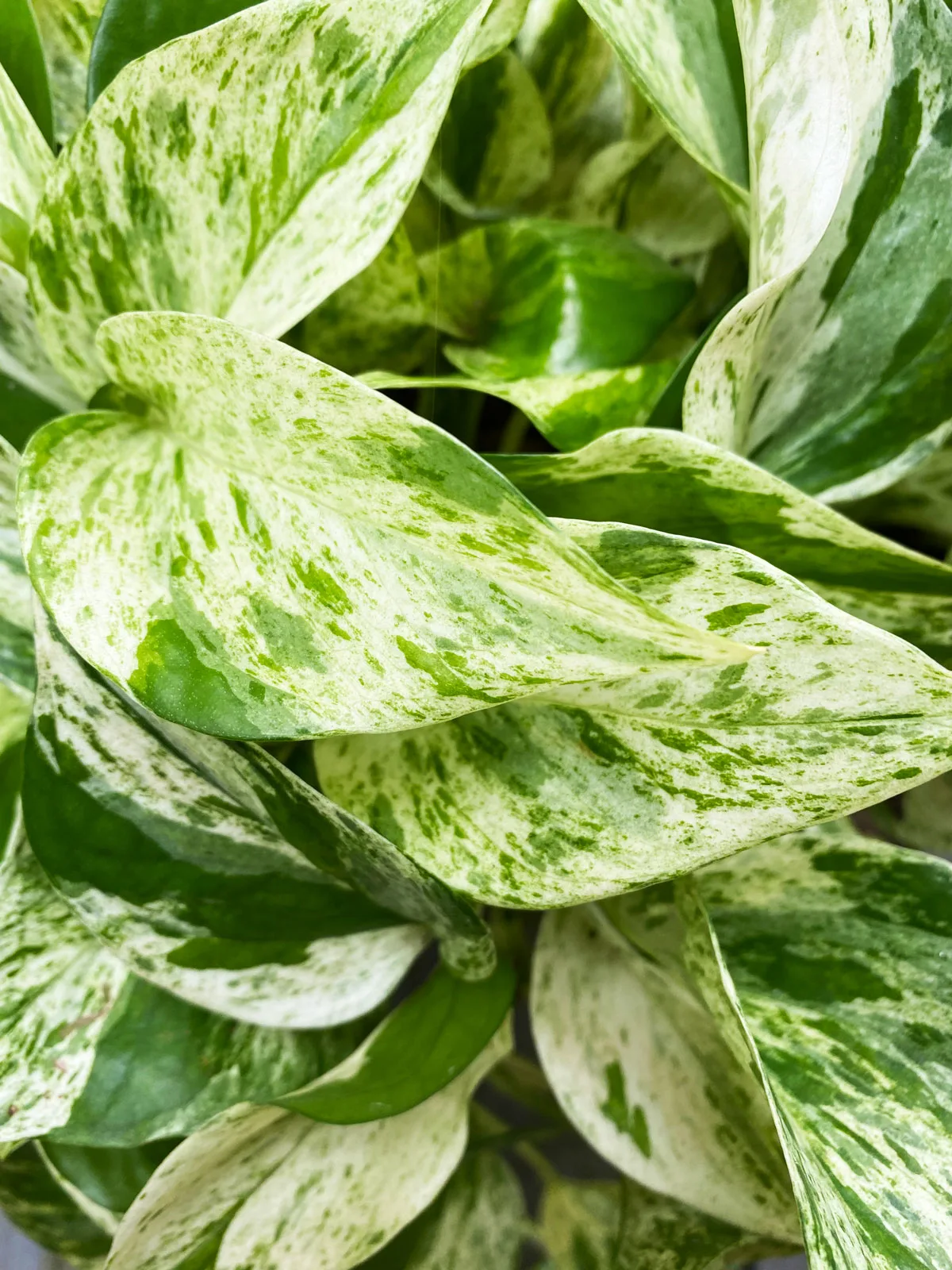
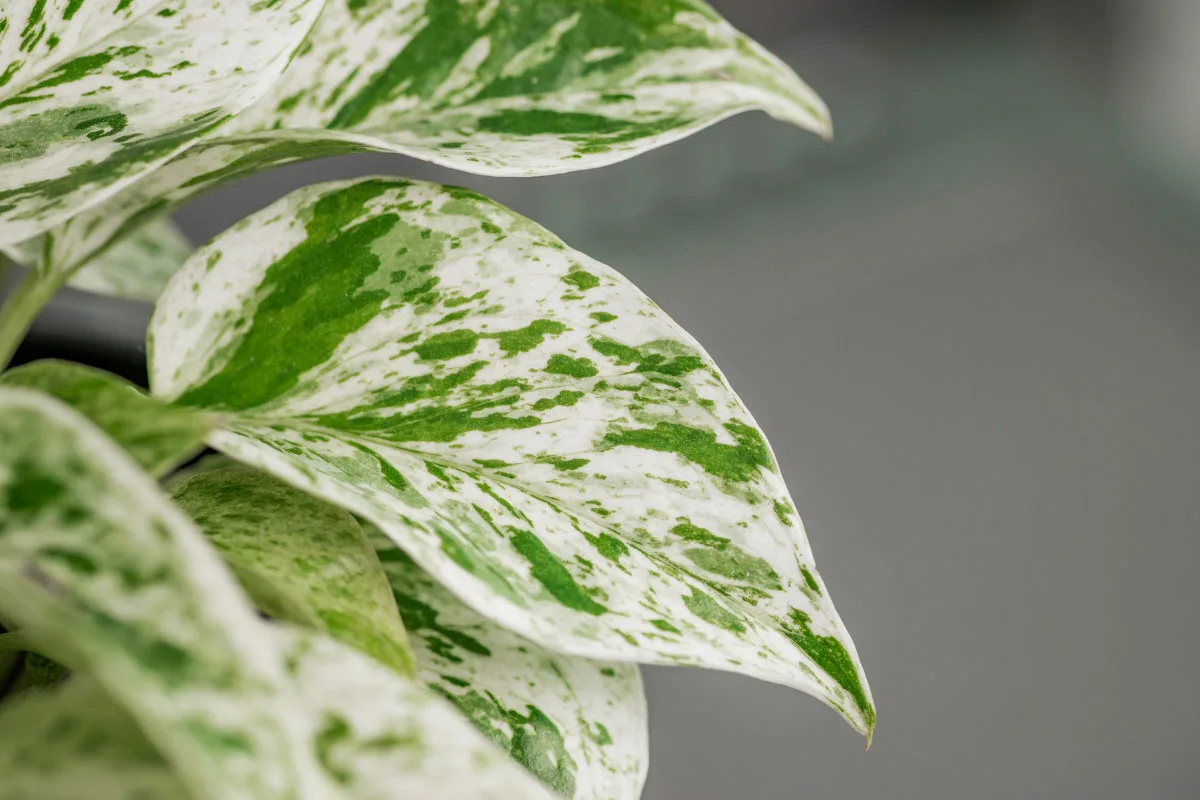
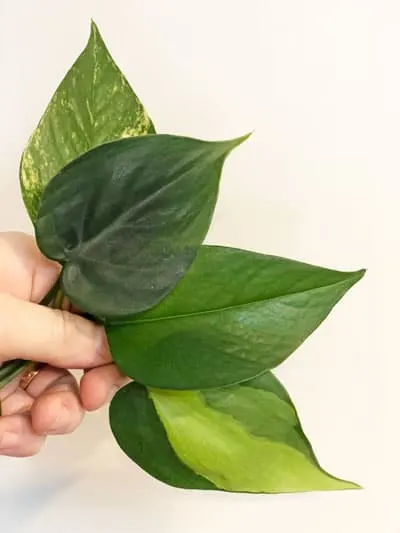
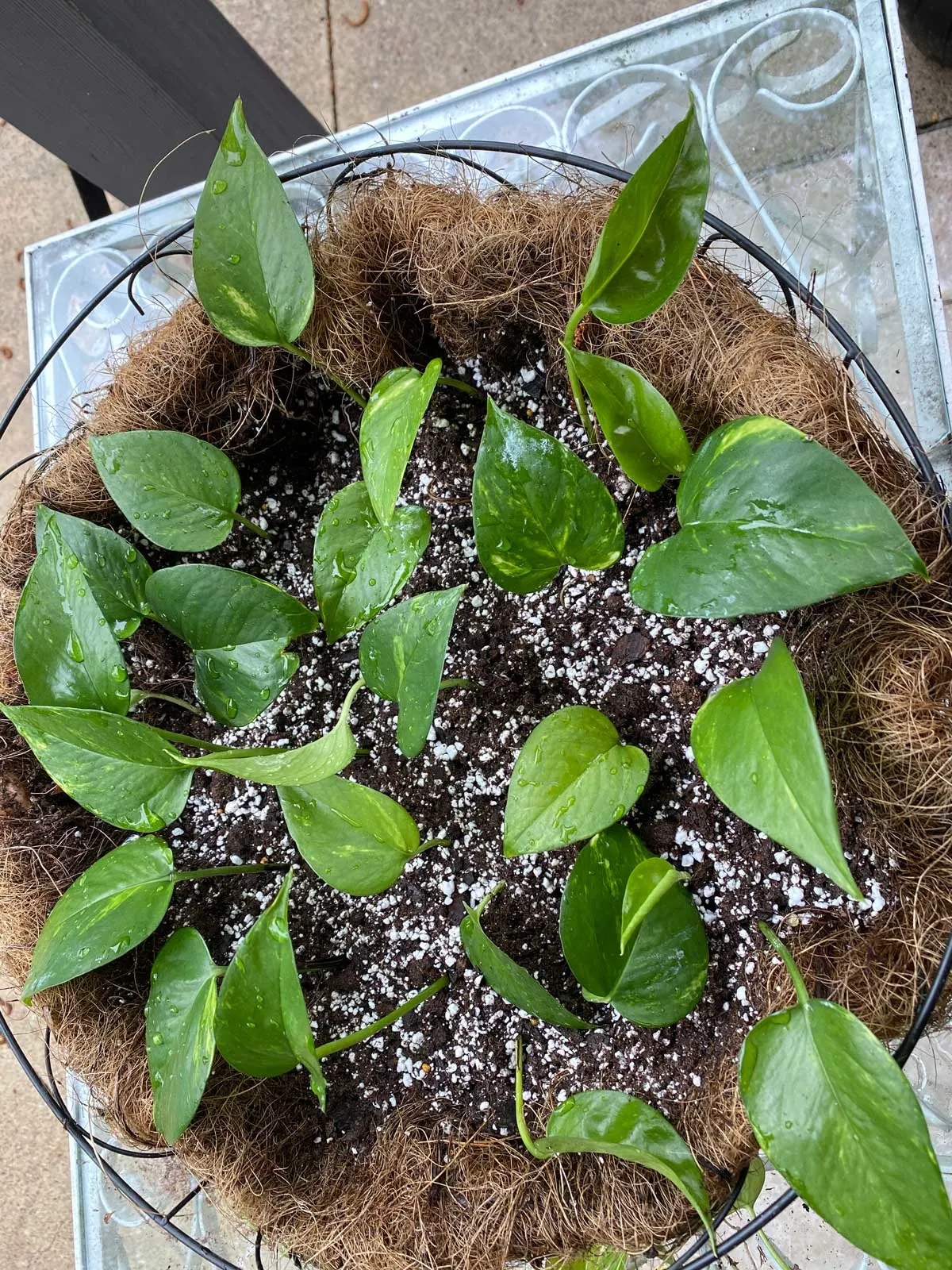
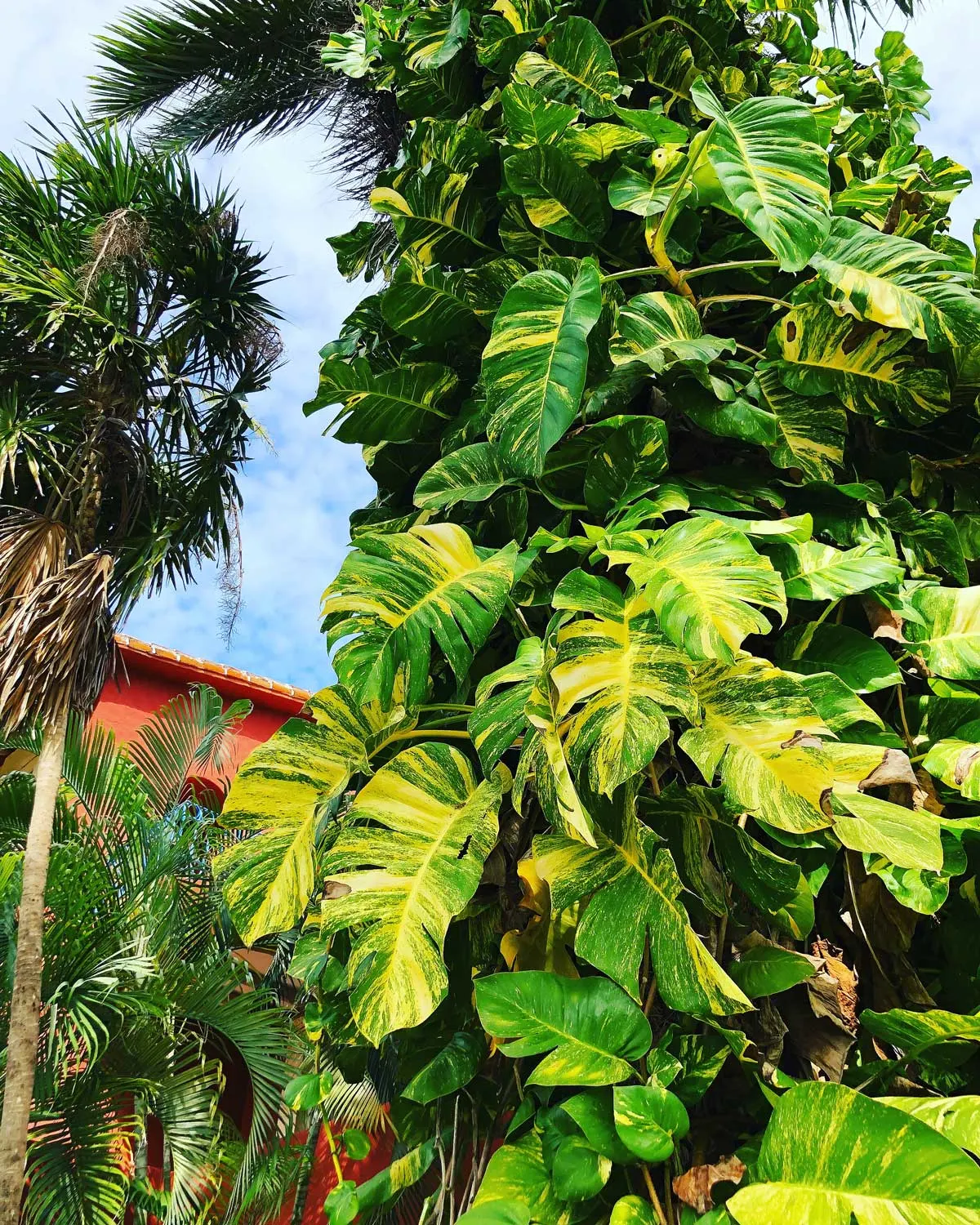
Sarah
Wednesday 15th of June 2022
Hi, I find your articles very helpful, and have learnt alot on how to understand my plants! However could you please help me out, I have a question about an njoy pothos cutting I have purchased, it has one healthy original leaf, one root approx 3in long, and one new shoot that is growing straight down in the water beside the root! How do I plant this in soil? Thanks!
Sarah
Wednesday 15th of June 2022
Hi, I really enjoy reading your articles, I have learnt alot on how to understand my plants! However could you help me out , I have a question on an njoy pothos cutting I have purchased, it has one original healthy leaf, one root approx 3in long, and one new shoot that is heading straight down in the water beside the root! How do I plant this in soil? Thanks!
Raffaele
Wednesday 15th of June 2022
Hi Sarah, just go ahead and plant it in soil now. The cutting will know what to do even if the orientation is a little weird :-).